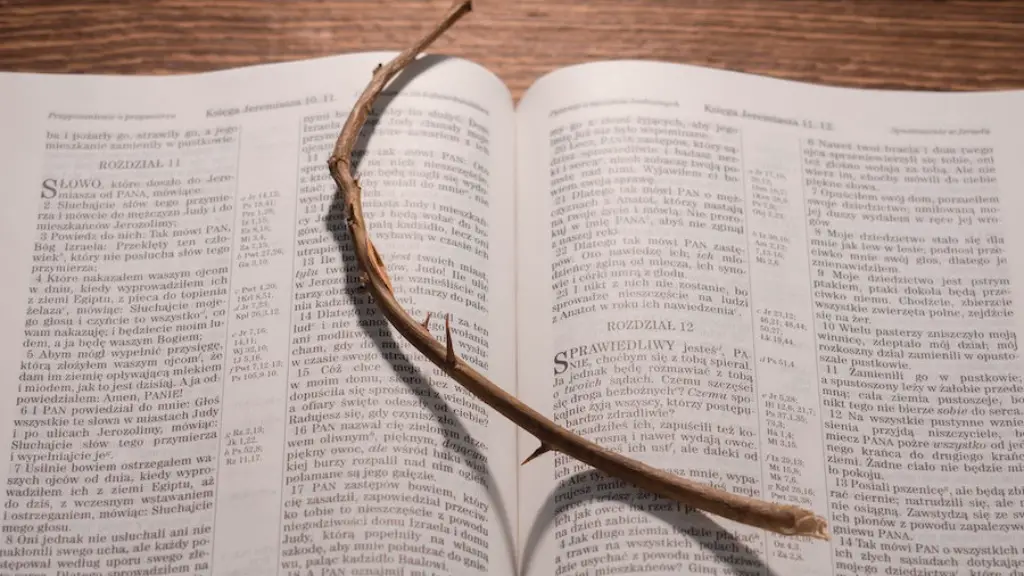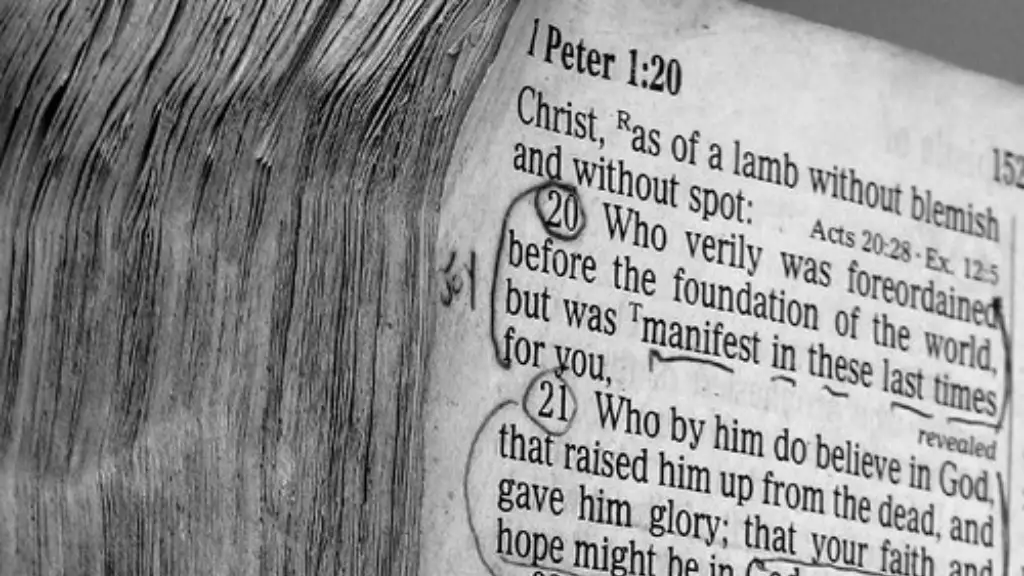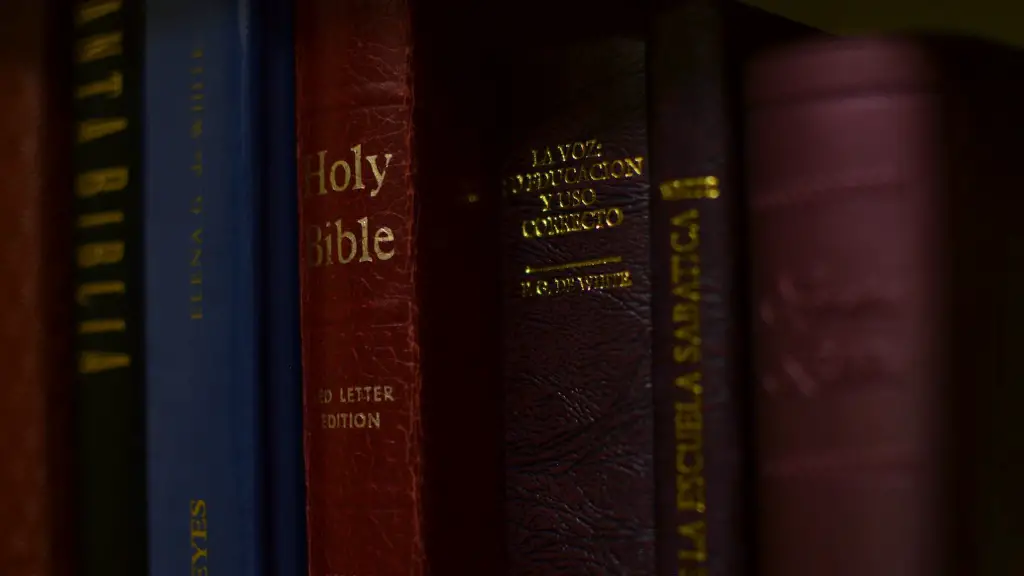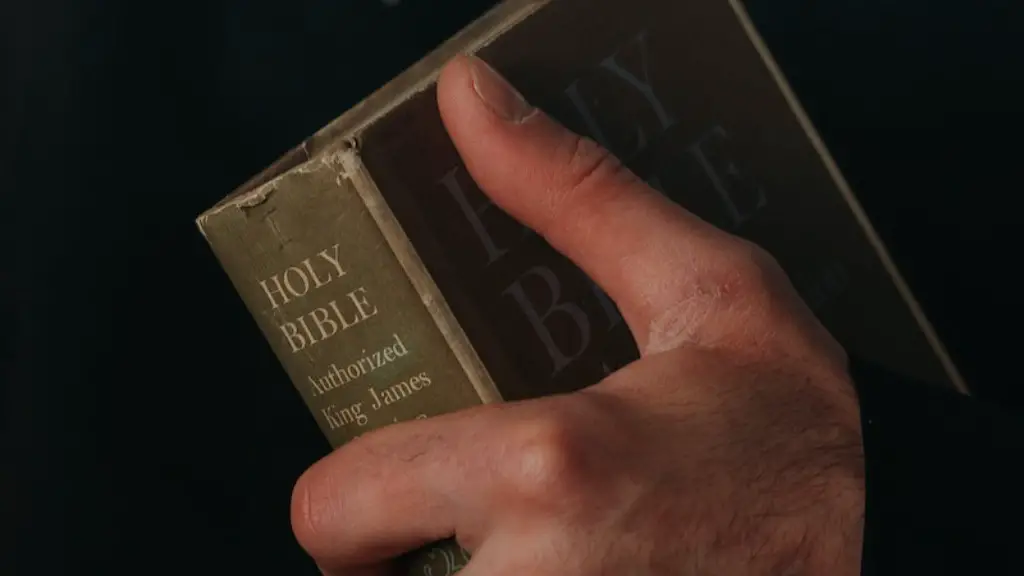The Bible speaks of the death and burial of Jesus, giving us a sense of where he was laid. Jesus was crucified on the cross, he fulfilled God’s will, died, and was buried. Interestingly, the burial of Jesus is mentioned several times in the Scriptures, adding further confirmation as to where Jesus was buried.
John 19:38-42 is the most detailed account of Jesus’ burial. It states that Joseph of Arimathea and Nicodemus, two followers of Jesus, placed his body in a new tomb. This tomb was hewn out of a rock and located in a garden near where Jesus had been crucified. It is believed the tomb was located somewhere near the modern-day Church of the Holy Sepulcher in Jerusalem – a popular pilgrimage site for many Christians.
The Bible further reveals Jesus’ tomb was closed shut with a large stone (Mark 15:46). It also records that Roman soldiers kept watch over the tomb, to make sure Jesus’ body stayed put (Matthew 27:62-66). Additionally, Jesus was likely wrapped in strips of cloth and spices were added, as was a common Jewish practice for burial (John 19:39-40).
The historic site provides tangible evidence of the death and resurrection of Jesus. The physical presence of the tomb reinforces the truth and inspiration found in the Bible. It helps explain the power of the spiritual resurrection and hope it provides. Furthermore, the tomb offers an opportunity to venerate the place of Jesus burial, unleashing a greater meaning and understanding of Christianity itself.
Dr. Matthew Whitehouse, an adjunct professor of religion at Vanguard University, explains this further: “Many have witnessed and experienced the power of the physical presence of Jesus’ tomb. By visiting the tomb, there is an opportunity to pause and reflect upon our need for a Saviour, to thank Him for His saving grace, and to turn our eyes towards Jesus, who can transform lives.”
The importance of Jesus’ burial site encourages a renewed appreciation of God’s love and grace. It speaks to those who long for a deeper understanding of Christianity and the power of the cross. It validates the notion of Jesus’ death and resurrection. At the same time, it provides an opportunity to connect with a place, which encourages a personal and collective growth of faith.
Jesus’ Burial and the Tradition of Holy Sites
Around the world, local and national churches have selected different sites regarded as holy. At times, Christianity has placed great importance in the physical presence of Jesus’ burial. For example, Jesus’ birthplace (known as the nativity site) is located in the city of Bethlehem, and churches have been constructed around the empty tomb at the Church of the Holy Sepulchre in Jerusalem.
The Christian faith has drawn from similar practices from other religions, who have historically built temples around the tombs of their religious figures. For instance, Muslims have erected the Dome of the Rock around the tomb of Abraham at the Al-Haram al-Sharif complex in Jerusalem. Additionally, Shinto followers place great significance on the site of a deceased leader, where they build Shinto altars to pay respect.
These types of practices illustrate how man-made sites can become a physical representation of faith and hope. It amplifies the power of culture and traditions surrounding a certain place, generating a deep and meaningful connection between the living and the deceased.
Professor Roberta Bichel, a chairperson of sociology at the University of Toronto, drives this further. She explains, “All religions provide examples of how tradition is kept alive through religious sites. These are reminders of events and ideals that have come to represent the faith and act as physical symbols for those who visit them.”
Jesus’ Burial and Significance in Modern Society
In our current world, Jesus’ burial continues to have a strong impact, as individuals seek solace in the presence of faith. Tourists from all over the world pilgrimage to Jesus’ burial site, to gain some peace, clarity, and newfound hope in life. It is a time to rejoice, but more importantly to be open to learning and hearing the stories the site offers.
Visiting holy sites grants an opportunity to listen closely to the voice of God, deepen one’s faith, and encounter the power of the resurrection. It encourages fresh perspectives, drives a greater understanding of service, and facilitates a renewed commitment to God’s redemption.
This is echoed by Jesuit priest, Fr. John Luthrien. He states, “The grace of knowing Christ’s death and resurrection, through his burial place, is a humbling experience. Visiting holy sites brings us closer to Jesus, His teachings, and provides us with the encouragement and assurance to live for the Kingdom of God. Seeing the site places us in direct contact with the legacy Jesus leave behind.”
Jesus’ Burial and its Impact on Human Understanding
The importance of Jesus’ burial helps us reach an understanding of what it means for us, today. It helps us recognize and appreciate our fundamental need for salvation and deliverance from sin. We’re granted a glimpse into the power of life, death, and resurrection that Jesus offers, encouraging us to draw closer to God.
Furthermore, through Jesus’ burial, we’re able to grasp a deeper understanding of our mortality and how we should live out the short lives we have. The idea is to live each day of our lives to ensure the legacy left by Jesus and the hope He brought will stay alive.
Dr. Louisa Klocner, an assistant professor of Christianity at Wilfrid Laurier University reflects upon this further, “The burial of Jesus encourages us to live out our human need for a greater hope. In living a Christian life, we can draw closer to Jesus and the hope he offers. This can help us through our daily struggles and provide a sense of direction and purpose when we are in need of one.”
Conclusion of Jesus’ Burial’s Impact on the World Today
In summary, Jesus’ burial holds a significant meaning in our current world. It provides tangible evidence of Jesus’ death and resurrection, generating a greater understanding of Christianity and its power. Furthermore, the practice of visiting holy sites has been a powerful practice shared between different religions and serves as a reminder of Jesus’ legacy that lives on.
Jesus was buried in a tomb near modern-day Jerusalem, providing a visual representation of Jesus’ teachings of our need for a greater hope and liberation from sin. Lastly, through an understanding and appreciation of Jesus’ burial, we have a better understanding of our mortality, ultimately, leading us to draw closer to God and live for His Kingdom and purposes.




